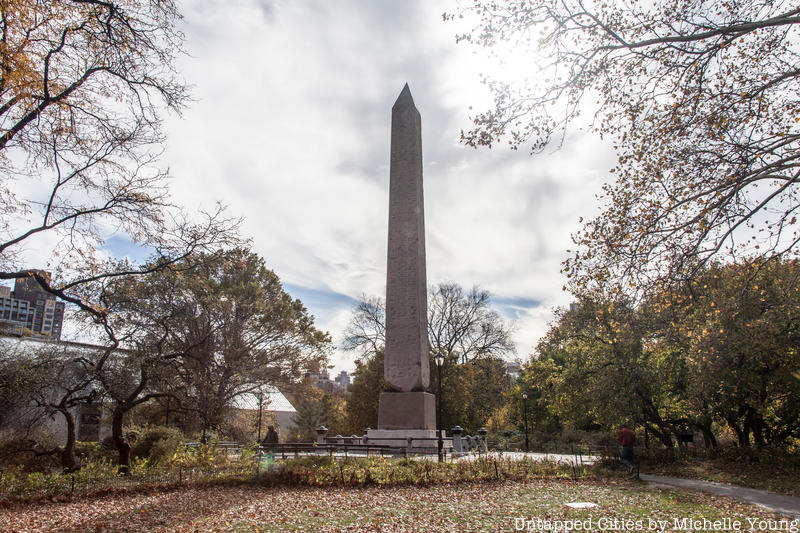8. NYC’s Only Egyptian Obelisk: Cleopatra’s Needle, Central Park
 Cleopatra’s Needle in Place on Graywacke Knoll in by the Metropolitan Museum of Art
Cleopatra’s Needle in Place on Graywacke Knoll in by the Metropolitan Museum of Art
One monument very unique to New York City also happens to oldest outdoor monument in the city– 3,460 years old to be exact. That’s the age of the Egyptian obelisk that sits in Central Park, which generally goes by its widespread nickname, Cleopatra’s Needle. The obelisk is one of two that were created by Egyptian Pharaoh Thutmose III who ordered the two great granite obelisks to celebrate his jubilee. Since then, they’ve been through devastating fires, restoration and a move to Alexandria by Augustus Caesar, and then another trip– this time over oceans with one in London, and Cleopatra’s Needle here in New York City. By the time Cleopatra’s Needle traveled to the states it took 16 weeks just to move it from 96th Street to Greywacke Knoll in Central Park, and 19 days, night and day just to cross the park on the 86th St transverse during bitter winter weather.
Why an obelisk? Well, turns out in the 18th century, the world was going through somewhat of an inexplicable obelisk fever. A New York Herald reporter wrote, “It would be absurd for the people of any great city to hope to be happy without an Egyptian Obelisk! Why, London, Paris and Rome could point the finger of scorn at us and intimate that we could never rise to any real moral grandeur until we had our own obelisk!” In May of 1879 the khedive provided a letter making a gift of Cleopatra’s Needle to the city of New York.
It’s safe to say the installation was one of the political and technological feats of the century, involving the builders of the Brooklyn Bridge, William Henry Vanderbilt, Lt Commander Henry Honeychurch Gorringe of the U.S. Navy, the commissioner of NYC’s parks, and the owner of the New York World paper. A parade of 9000 Freemasons led by The Grand Master Mason of New York, “the Most Worshipful Jesse B. Anthony,” marched up Fifth Avenue for the solemn laying of the cornerstone on October 11, 1880.
Also, at the time of the installation, a time capsule was buried just beneath. It included an 1870 U.S. census, the Bible, Webster’s Dictionary, the complete works of Shakespeare, a guide to Egypt, and a facsimile of the Declaration of Independence.





